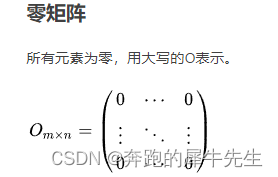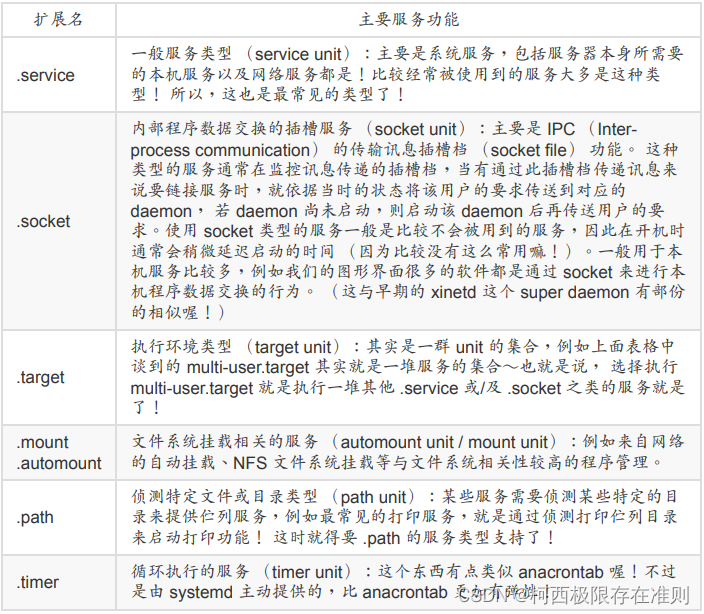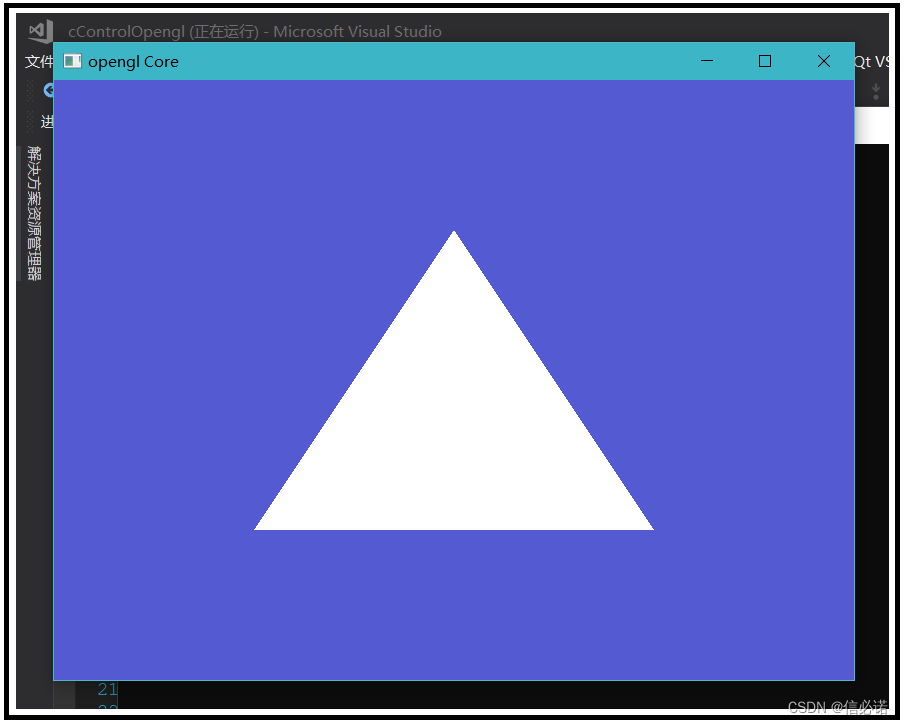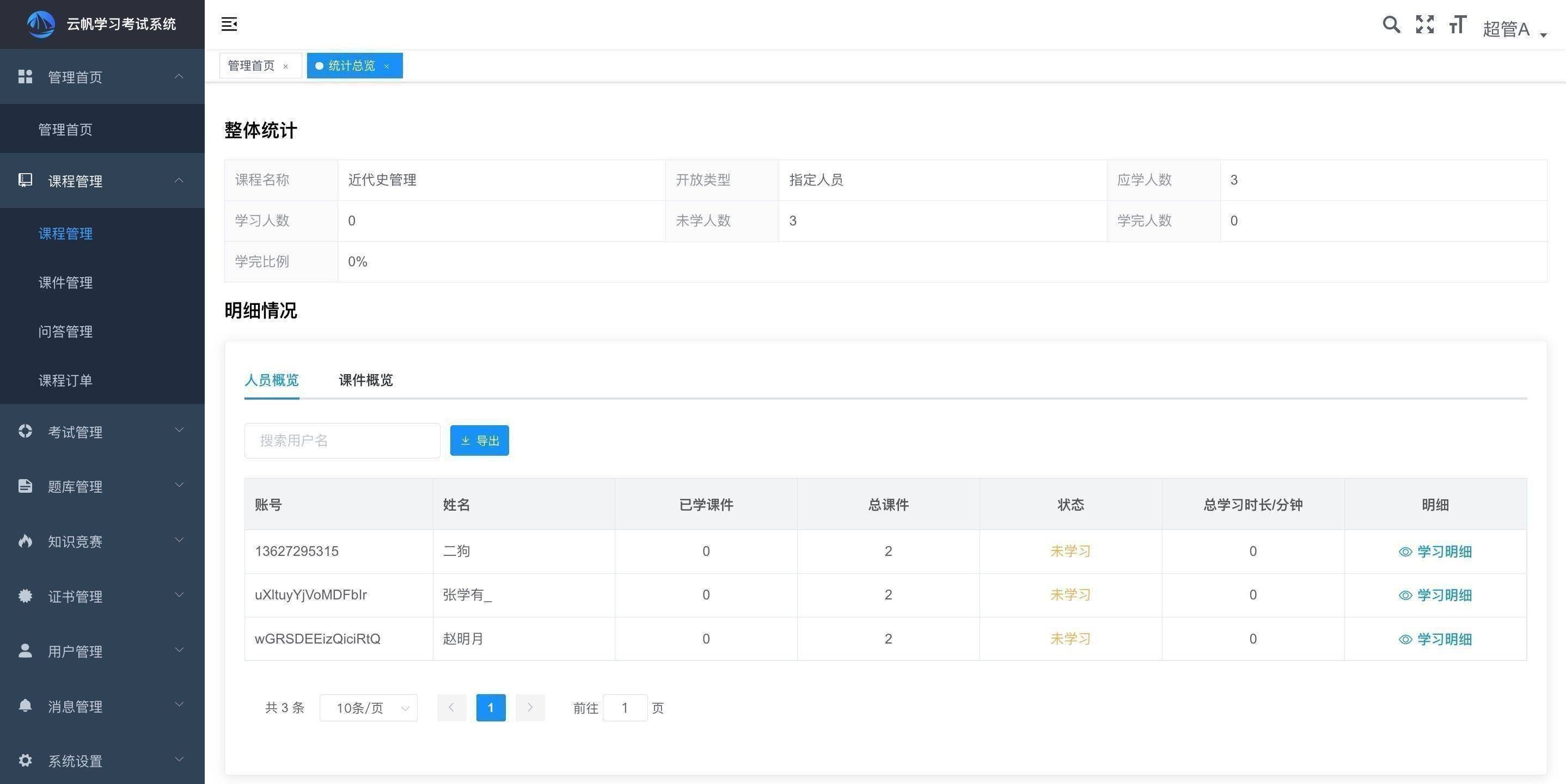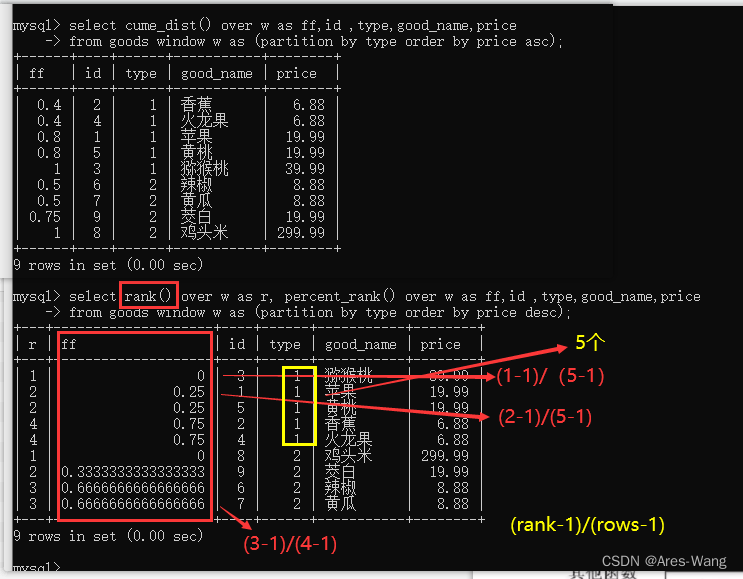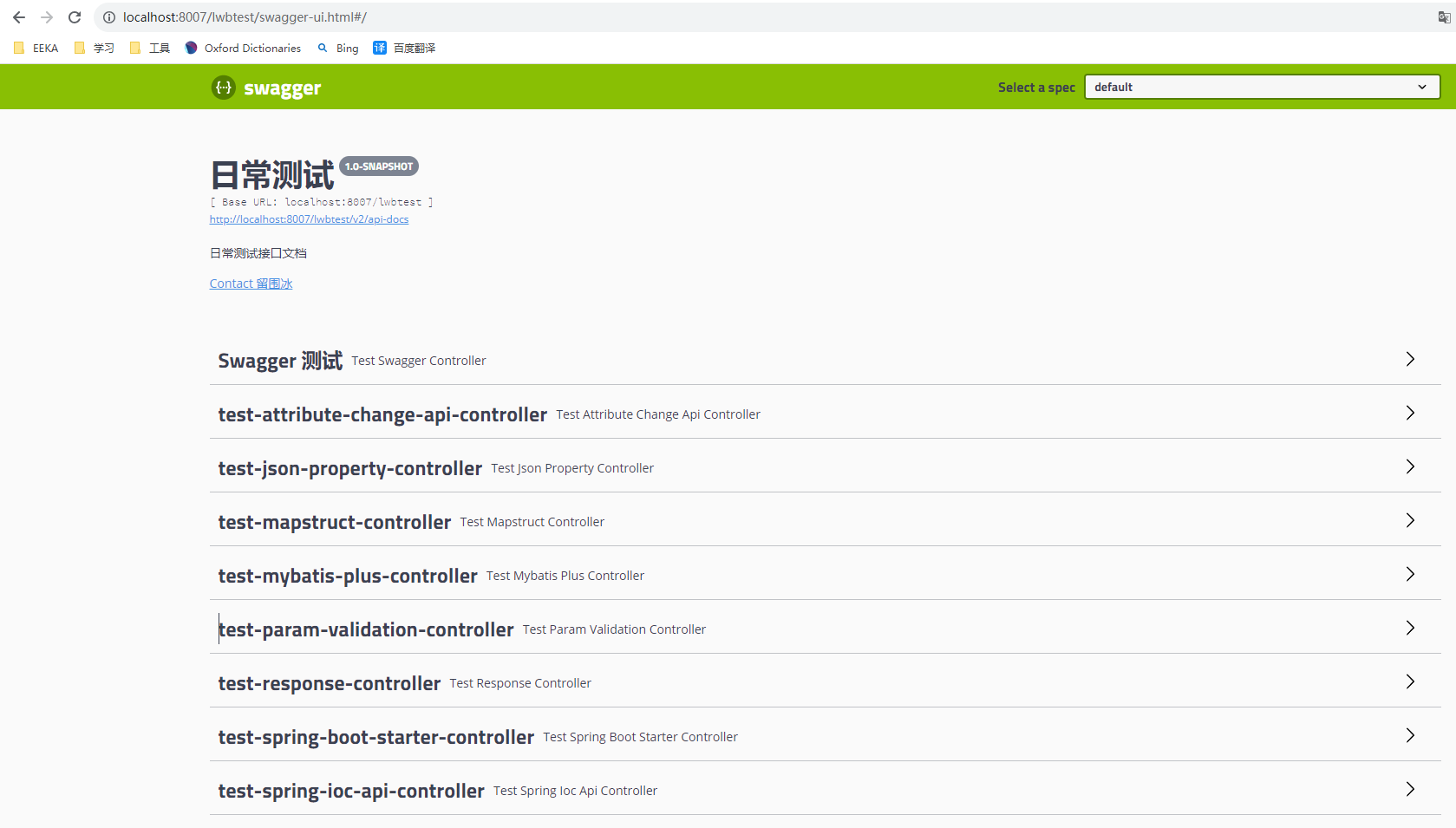5G终端带宽大、频率高,天线一般为4接收2发射,因此功耗比较高。
5G Power Saving技术为3GPP的一大主要课题,本文介绍几种5G省电技术。
CDRX(Connected Discontinuous reception)是让终端定期休眠不监听PDCCH。
WUS(Wake-Up Signaling)是为了弥补CDRX缺陷,减少终端在没有数据时仍然定时唤醒监听PDCCH。
BWP是根据业务速率需求动态使用带宽,避免了长期使用大带宽导致终端射频资源的浪费以及高功耗。
UAI是终端为了降低自身能耗,将期待的网络配置上报给基站,帮助基站更好地了解每个终端的实际情况。基站会参考终端的建议调整资源配置,以达到帮助终端省电的目的。
以上休眠方案都是用于PCell或者PScell,通过减少主小区或者主小区组的唤醒次数来达到降低功耗。
SCell dormancy是用于降低辅小区功耗的方式。
-
连接态下非连续接收CDRX
DRX是UE为了省电而引入的一项功能,由RRC层进行配置,在连接态下,如果RRC层对MAC层配置了DRX功能,那么UE在物理层就可以间断性地对PDCCH进行监测;否则,UE就必须连续地对PDCCH进行监测。
CDRX(Connected Mode Discontinuous Reception)是UE在连接态下的DRX功能;而空闲态下的DRX功能,则是我们所熟知的寻呼功能(paging)。
3GPP TS 38.321对DRX的定义如下
5.7 Discontinuous Reception (DRX)
The MAC entity may be configured by RRC with a DRX functionality that controls the UE's PDCCH monitoring activity for the MAC entity's C-RNTI, CI-RNTI, CS-RNTI, INT-RNTI, SFI-RNTI, SP-CSI-RNTI, TPC-PUCCH-RNTI, TPC-PUSCH-RNTI, TPC-SRS-RNTI, AI-RNTI, SL-RNTI, SLCS-RNTI and SL Semi-Persistent Scheduling V-RNTI. When using DRX operation, the MAC entity shall also monitor PDCCH according to requirements found in other clauses of this specification. When in RRC_CONNECTED, if DRX is configured, for all the activated Serving Cells, the MAC entity may monitor the PDCCH discontinuously using the DRX operation specified in this clause; otherwise the MAC entity shall monitor the PDCCH as specified in TS 38.213 [6].
CDRX总体状态
在RRC连接态下,网络配置DRX功能后,总体示意图如下

1)UE按照基站配置的DRX Cycle来监听PDCCH信道
2)在On Duration时间内(毫秒级),UE正常监听PDCCH信道,在On Duration之后,UE可以进入DRX状态,即休眠状态,节省能耗
3)当UE进入休眠状态后,此时如果网络有下行数据到达,基站不能进行下行PDCCH调度,DRX Cycle周期越长,下行数据时延可能就越大,因此CDRX虽然可以节省UE在连接态的能耗,但相应的会使下行数据业务时延增加
CDRX参数配置和介绍
网络通过ConnectionReconfiguration、RRCConnectionSetup、RRCConnectionReestablishment这三条RRC信令来告诉UE是否配置DRX以及DRX参数,UE侧RRC层收到DRX配置后,再向MAC层下发DRX配置参数
3GPP TS 38.331定义DRX的参数如下
DRX-Config information element
DRX-Config ::= SEQUENCE {
drx-onDurationTimer
drx-InactivityTimer
drx-HARQ-RTT-TimerDL
drx-HARQ-RTT-TimerUL
drx-RetransmissionTimerDL
drx-RetransmissionTimerUL
drx-LongCycleStartOffset,
shortDRX SEQUENCE {
drx-ShortCycle
drx-ShortCycleTimer
}
drx-SlotOffset
}
drx-onDurationTimer:
表示在一个DRX Cycle周期中,UE唤醒监听PDCCH信道的时长,包含两个参数subMilliSeconds和miliSeconds
subMilliSeconds INTEGER (1..31),
milliSeconds ENUMERATED {
ms1, ms2, ms3, ms4, ms5, ms6, ms8, ms10, ms20, ms30, ms40, ms50, ms60, ms80, ms100, ms200, ms300, ms400, ms500, ms600, ms800, ms1000, ms1200, ms1600, spare8, spare7, spare6, spare5, spare4, spare3, spare2, spare1 }
当配置为subMiliSeconds时,单位为1/32ms,即定时器长度小于1ms,当配置为miliSeconds时,为毫秒级。
drx-InactivityTimer:
在UE收到一个PDCCH新调度时,由于后续可能还有需要发送和接收的上下性数据,因此UE不能直接进入睡眠态,需要继续监听InactivityTimer的时间才可以重新进入睡眠态
因为InactivityTimer定时器的存在,只要UE有新数据到达,InactivityTimer 就会重新启动,UE的激活时间就会延长,这样网络就可以一直不停给UE发送数据
drx-HARQ-RTT-TimerDL / drx-HARQ-RTT-TimerUL:
当UE进行数据解码失败后,会触发HARQ(Hybrid Automatic Repeat Request),这时UE需要等待多长重传时间由drx-HARQ-RTT-TimerDL/drx-HARQ-RTT-TimerUL控制,在这个时间内不会有PDCCH的调度
drx-RetransmissionTimerDL / drx-RetransmissionTimerUL:
在HARQ进程时,如果UE解码PDSCH失败时,HARQ RTT定时器超后,UE并不确定网络什么时候会继续重发数据,但UE也不可能无限的等待下去,drx-RetransmissionTimerDL/drx-RetransmissionTimerUL就是表示UE还需要监听多长时间,在HARQ RTT定时器超后此Timer会启动

drx-LongCycleStartOffset:
配置DRX Cycle长周期时长,DRX长周期为必须配置的参数,满足以下公式:
[(SFN∗10)+subframe number] mod (longDRX_Cycle)==(drxStartOffset)
shortDRX:
在配置DRX长周期时,虽然有利于终端节能,但可能会影响数据收发的时延,因此DRX参数中引入了shortDRX配置,DRX短周期为可选参数
在drx-onDurationTimer超时后,会触发shortDRX

log分析
//UE能力上报支持CDRX
[MS->NW] NR_UECapabilityInformation
{
mac-Parameters
mac-ParametersXDD-Diff
logicalChannelSR-DelayTimer: supported (0)
longDRX-Cycle: supported (0)
shortDRX-Cycle: supported (0)
}
//网络给UE配置CDRX
[NW->MS] NR_RRCReconfiguration
{
mac-CellGroupConfig
drx-Config: setup (1)
setup
drx-onDurationTimer: milliSeconds (1)
milliSeconds: ms30 (9)
drx-InactivityTimer: ms80 (14)
drx-HARQ-RTT-TimerDL: 56
drx-HARQ-RTT-TimerUL: 56
drx-RetransmissionTimerDL: sl8 (5)
drx-RetransmissionTimerUL: sl8 (5)
drx-LongCycleStartOffset: ms160 (9)
ms160: 25
drx-SlotOffset: 0 ms (0)
}
//msg信息确认
ICD_EVENT[NL2_MAC_DRX_Status_Event(0x9588) P_ID(1) VERSION(5)]
{
"DRX config":
{
"Valid":1,
"drx-HARQ-RTT-TimerDL":56,
"drx-HARQ-RTT-TimerUL":56,
"drx-SlotOffset":0,
"drx-OnDurationTimer config":
{
"drx-OnDurationTimer unit":1,
"Reserved":0,
"drx-OnDurationTimer":30
}
"DRX short cycle config":
{
"Valid":0,
"drx-ShortCycleTimer":0,
"drx-ShortCycle":0
}
"drx-InactivityTimer":80,
"drx-RetransmissionTimerDL":8,
"drx-RetransmissionTimerUL":8,
"drx-LongCycle":160,
"drx-StartOffset":25,
"Reserved":0
}
-
唤醒信号WUS(Wake-Up Signal)
WUS又叫DRX Adaptation,是基于DRX的增强, 当UE无需和网络交互时,如果UE仍然周期性的唤醒的话,就会造成不必要的功耗,基于原有DRX机制的基础上,为了更加优化UE的功耗,3GPP在5G Release 16提出了DRX Adaptation。
当网络侧需要针对某个UE进行上下行调度时,会发一个WUS信号(携带了DCI Format 2_6的PDCCH)给UE,让UE仍然周期性的唤醒以接收 PDCCH 的调度信息,过了一段时间后,如果没有数据要传输了,这个时候网络侧就下发 WUS 给 UE,指UE后续不需要进入DRX状态,一直维持在休眠状态并无需监听后续网络侧的PDCCH,以此来降低功耗。
3GPP TS 38.306对drx-Adaptation能力描述如下
drx-Adaptation-r16, drx-Adaptation-r17
Indicates whether the UE supports DRX adaptation comprised of the following functional components:
- Configured ps-Offset for the detection of DCI format 2_6 with CRC scrambling by ps-RNTI and reported MinTimeGap before the start of drx-onDurationTimer of Long DRX
- Indication of UE whether or not to start drx-onDurationTimer for the next Long DRX cycle by detection of DCI format 2_6
- Configured UE wakeup or not when DCI format 2_6 is not detected at all monitoring occasions outside Active Time
- Configured periodic CSI report apart from L1-RSRP (ps-TransmitOtherPeriodicCSI) when impacted by DCI format 2_6 that drx-onDurationTimer does not start for the next Long DRX cycle
- Configured periodic L1-RSRP report (ps-TransmitPeriodicL1-RSRP) when impacted by DCI format 2_6 that drx-onDurationTimer does not start for the next Long DRX cycle
The capability signalling includes the minimum time gap between the end of the slot of last DCI format 2_6 monitoring occasion and the beginning of the slot where the UE would start the drx-onDurationTimer of Long DRX for each SCS. The value sl1 indicates 1 slot. The value sl2 indicates 2 slots, and so on. Support of this feature is reported for licensed and unlicensed bands, respectively. When this field is reported, either of sharedSpectrumChAccess-r16 or non-SharedSpectrumChAccess-r16 shall be reported, at least.
WUS工作机制

WUS参数配置和介绍
3GPP TS 38.331定义WUS的参数如下:
DCP-Config-r16 ::= SEQUENCE {
ps-RNTI-r16 RNTI-Value,
ps-Offset-r16 INTEGER (1..120),
sizeDCI-2-6-r16 INTEGER (1..maxDCI-2-6-Size-r16),
ps-PositionDCI-2-6-r16 INTEGER (0..maxDCI-2-6-Size-1-r16),
ps-WakeUp-r16 ENUMERATED {true}
ps-TransmitPeriodicL1-RSRP-r16 ENUMERATED {true}
ps-TransmitOtherPeriodicCSI-r16 ENUMERATED {true}
}
ps-RNTI-r16:
ps-RNTI全称为Power Saving-RNTI(Radio Network Temporary Identity),用于对下发给UE的PDCCH进行CRC加扰,RNTI-Value 的取值范围为0001-FFF2,UE后续会用该值解扰PS-RNTI所加扰的PDCCH,然后携带DCI Format 2_6 的PDCCH用于指示UE是否在下一个 DRX 周期唤醒。
3GPP TS 38.212对DCI Format 2_6定义如下:
7.3.1.3.7 Format 2_6
DCI format 2_6 is used for notifying the power saving information outside DRX Active Time for one or more UEs.
The following information is transmitted by means of the DCI format 2_6 with CRC scrambled by PS-RNTI:
- block number 1, block number 2,…, block number N
where the starting position of a block is determined by the parameter ps-PositionDCI-2-6 provided by higher layers for the UE configured with the block.
If the UE is configured with higher layer parameter ps-RNTI and dci-Format2-6, one block is configured for the UE by higher layers, with the following fields defined for the block:
- Wake-up indication - 1 bit
- SCell dormancy indication – 0 bit if higher layer parameter dormancyGroupOutsideActiveTime is not configured; otherwise 1, 2, 3, 4 or 5 bits bitmap determined according to the number of different DormancyGroupID(s) provided by higher layer parameter dormancyGroupOutsideActiveTime, where each bit corresponds to one of the SCell group(s) configured by higher layers parameter dormancyGroupOutsideActiveTime, with MSB to LSB of the bitmap corresponding to the first to last configured SCell group in ascending order of DormancyGroupID.
The size of DCI format 2_6 is indicated by the higher layer parameter sizeDCI-2-6, according to Clause 10.3 of [5, TS 38.213].
ps-Offset-r16:
为相对于long DRX的drx-onDurationTimer启动的时间提前偏移量,UE提前偏移对PDCCH进行盲检,即DCI format 2_6来确定WUS信息
sizeDCI-2-6-r16:
网络可以给一个UE配置唯一的DCI Format 2_6,也可以给多个UE配置相同的DCI Format 2_6,这就导致了DCI Format 2_6的message size可能会变化,因此网络侧需要UE所以下发的DCI size
ps-PositionDCI-2-6-r16:
指示UE到对应的时频位置去接收携带DCI Format 2_6的PDCCH
ps-WakeUp-r16:
此参数用于指示UE在没有检测到携带DCI Format 2_6的PDCCH时,是否需要唤醒进入DRX状态,如果该配置未下发,UE默认无需唤醒,继续休眠
ps-TransmitPeriodicL1-RSRP-r16:
用于指示UE在收到网络侧下发的无需唤醒继续休眠的WUS信号后,是否需要周期性上报RSRP,如果该配置未下发,UE默认无需上报
ps-TransmitOtherPeriodicCSI-r16:
用于指示UE在休眠阶段除了是否需要在上报RSRP之外,是否需要周期性上报用于网络侧进行信道估计的CSI信息,如果该配置未下发,UE默认无需上报
-
部分带宽BWP(BandWidth Part)
在LTE中,载波带宽就是UE的工作带宽,但在NR中,由于载波带宽会很大,UE没有必要始终工作在如此大的载波带宽上,因此NR引入BWP部分带宽概念,减少高带宽带来的资源开销和降低UE的功耗
3GPP TS 38.211对BWP的定义如下
对于带宽的自适应,3GPP引入BA(Bandwidth Adaptation)概念
3GPP TS 38.300对BA的介绍如下:
6.10 Bandwidth Adaptation
With Bandwidth Adaptation (BA), the receive and transmit bandwidth of a UE need not be as large as the bandwidth of the cell and can be adjusted: the width can be ordered to change (e.g. to shrink during period of low activity to save power); the location can move in the frequency domain (e.g. to increase scheduling flexibility); and the subcarrier spacing can be ordered to change (e.g. to allow different services). A subset of the total cell bandwidth of a cell is referred to as a Bandwidth Part (BWP) and BA is achieved by configuring the UE with BWP(s) and telling the UE which of the configured BWPs is currently the active one.
Figure 6.10-1 below describes a scenario where 3 different BWPs are configured:
- BWP(1) with a width of 40 MHz and subcarrier spacing of 15 kHz;
- BWP(2) with a width of 10 MHz and subcarrier spacing of 15 kHz;
- BWP(3) with a width of 20 MHz and subcarrier spacing of 60 kHz.
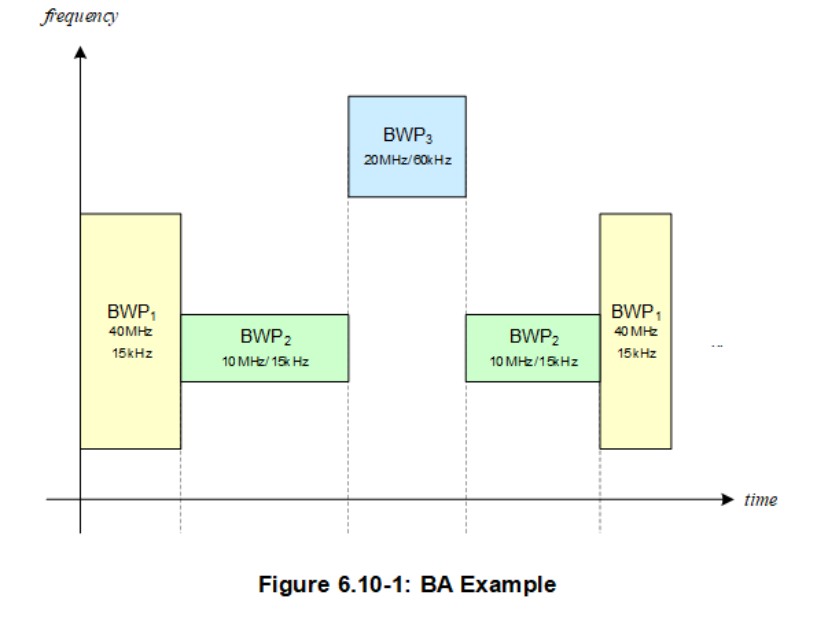
BWP参数介绍:
BWP ::= SEQUENCE {
locationAndBandwidth INTEGER (0..37949),
subcarrierSpacing SubcarrierSpacing,
cyclicPrefix ENUMERATED { extended }
}
locationAndBandwidth:
为协议TS38.214中RIV的计算值,由其可推断出BWP的起始位置RB和工作带宽
subcarrierSpacing:
Subcarrier spacing to be used in this BWP for all channels and reference signals unless explicitly configured elsewhere. Corresponds to subcarrier spacing according to TS 38.211 [16], table 4.2-1. The value kHz15 corresponds to µ=0, value kHz30 corresponds to µ=1, and so on.
cyclicPrefix :
Indicates whether to use the extended cyclic prefix for this bandwidth part. If not set, the UE uses the normal cyclic prefix. Normal CP is supported for all subcarrier spacings and slot formats. Extended CP is supported only for 60 kHz subcarrier spacing. (see TS 38.211 [16], clause 4.2). Except for SUL, the network ensures the same cyclic prefix length is used in active DL BWP and active UL BWP within a serving cell.
BWP类型:
Initial BWP:初始BWP,用于UE接入前的信息接收,主要是用于接收系统消息和随机接入相关信息
Active BWP:活跃BWP,带宽比初始BWP大,UE主要在这个BWP上进行数据传输
Default BWP:默认BWP,是在RRCReconfiguration中配置给UE的。如果没有配置,则将Initial BWP认为是default BWP,并在bwp-inactivityTimer超时之后,UE仍没有被调度,则将UE切换到default BWP
BWP个数:
协议规定上下行方向UE最多配置4个BWP,同时只能激活一个BWP,UE只能在激活的BWP上进行上下行接收
BWP的能力:
1)UE不上报任何BWP能力,则UE不支持DCI和Timer切换,RRC专用信令配置1个DL/UL BWP,即UE不支持BWP
2)UE上报bwp-SameNumerology,upto2 or upto4,则UE支持DCI和Timer切换,RRC专用信令可配置2/4个DL/UL BWP,4个BWP有相同的SCS
3)UE上报bwp-DiffNumerolgy,upto4,则UE支持DCI和Timer切换,RRC专用信令可配置4个DL/UL BWP,4个BWP可以有不同的SCS
4)UE上报bwp-WithoutRestrictions,则RRC专用信令配置的BWP可以不包含SSB和CORESET#0
5)bwp-SwitchingDelay,Type1 or Type2,BWP切换时延,不论采用何种方式,UE切换BWP都需要配置切换时延
3GPP TS 38.306对BWP能力的具体介绍如下
bwp-SwitchingDelay
Defines whether the UE supports DCI and timer based active BWP switching delay type1 or type2 specified in clause 8.6.2 of TS 38.133 [5]. It is mandatory to report type 1 or type 2 when bwp-SameNumerology or bwp-DiffNumerology is supported on at least one band. This capability is not applicable to IAB-MT.
bwp-SameNumerology
Indicates whether UE supports BWP adaptation (up to 2/4 BWPs) with the same numerology, via DCI and timer. Except for SUL, the UE only supports the same numerology for the active UL and DL BWP. For the UE capable of this feature, the bandwidth of a UE-specific RRC configured DL BWP includes the bandwidth of the CORESET#0 (if CORESET#0 is present) and SSB for PCell and PSCell (if configured). For SCell(s), the bandwidth of the UE-specific RRC configured DL BWP includes SSB, if there is SSB on SCell(s).
bwp-DiffNumerology
Indicates whether the UE supports BWP adaptation up to 4 BWPs with the different numerologies, via DCI and timer. Except for SUL, the UE only supports the same numerology for the active UL and DL BWP. For the UE capable of this feature, the bandwidth of a UE-specific RRC configured DL BWP includes the bandwidth of the CORESET#0 (if CORESET#0 is present) and SSB for PCell and PSCell (if configured). For SCell(s), the bandwidth of the UE-specific RRC configured DL BWP includes SSB, if there is SSB on SCell(s).
bwp-WithoutRestriction
Indicates support of BWP operation without bandwidth restriction. The Bandwidth restriction in terms of DL BWP for PCell and PSCell means that the bandwidth of a UE-specific RRC configured DL BWP may not include the bandwidth of CORESET #0 (if configured) and SSB. For SCell(s), it means that the bandwidth of DL BWP may not include SSB.
BWP切换
BWP切换和BWP能力强相关,当配置多个BWP时,就涉及到终端如何在不同的BWP之间进行转换的问题,通常情况下,BWP的切换可以通过4种不同的方式完成
1)通过RRC信令重配firstActiveDownlinkBWP-Id进行切换
2)基于Timer超时进行BWP切换,当bwp-inactivityTimer超时后,从当前激活的BWP返回到default BWP
3)通过DCI中的BWP字段进行切换,在DCI 0-1和DCI 1-1中有Bandwidth part indicator,可在上下行调度时通过Bandwidth part indicator切换BWP
4)基于RACH的BWP切换
log分析
//UE上报支持的BWP能力
[MS->NW] NR_UE-NR-Capability IE
{
BandNR ::= SEQUENCE {
bwp-WithoutRestriction ENUMERATED {supported} OPTIONAL,
bwp-SameNumerology ENUMERATED {upto2, upto4} OPTIONAL,
bwp-DiffNumerology ENUMERATED {upto4} OPTIONAL,
Phy-ParametersCommon ::= SEQUENCE {
bwp-SwitchingDelay ENUMERATED {type1, type2} OPTIONAL,
}
//网络下发SIB1消息,建立initial BWP
[NW->MS] SIB1 (DL_FREQ_BAND[41], SSB_ARFCN[[504990], PCI[889], SCS[NR_SCS_30])
{
initialDownlinkBWP
genericParameters
locationAndBandwidth: 1099
subcarrierSpacing: kHz30 (1)
pdcch-ConfigCommon: setup (1)
}
//UE正常建立inital bwp,并建立active bwp
[NW->MS] NR_RRCReconfiguration (NARFCN[504990], PCI[889]) (masterCellGroup[1], MCGreconfigurationWithSync[0], secondaryCellGroup[0], SCGreconfigurationWithSync[0], measConfig[1], radioBearerConfig[0], mrdc-SecondaryCellGroupConfig[0], radioBearerConfig2[0])
{
firstActiveDownlinkBWP-Id: 1
uplinkConfig
initialUplinkBWP
pucch-Config: release (0)
release: NULL
pusch-Config: release (0)
release: NULL
srs-Config: release (0)
release: NULL
uplinkBWP-ToAddModList: 1 item
Item 0
BWP-Uplink
bwp-Id: 1
bwp-Common
genericParameters
locationAndBandwidth: 1099
subcarrierSpacing: kHz30 (1)
}
//UE激活的BWP信息
ICD_RECORD[NL1_Physical_Configuration(0x9014) P_ID(1) VERSION(13)]
{
"Default DL BWP Id":0,
"Number of DL BWP":0,
"Active UL BWP Config":
{
"BWP Id":0,
"BWP start":0,
"BWP size":273,
"Sub carrier Spacing":1,
"Bandwidth":11,
"Reserved":0,
"Max throughput":0,
"locationAndBandwidth":1099,
"Reserved":0
}
"Active DL BWP Config":
{
"BWP Id":0,
"BWP start":0,
"BWP size":273,
"Sub carrier Spacing":1,
"Bandwidth":11,
"Reserved":0,
"Max throughput":0,
"locationAndBandwidth":1099,
"Reserved":0
}
-
UE辅助信息UAI(UE Assistance Information)
UE辅助信息上报是一种特殊的RRC消息机制,通过此消息UE主动向网络告知内部状态,以便网络及时了解手机状态,更好地分配和调节资源。
UE辅助信息关键是过热和节能
3GPP R15中就引入了UAI,用于终端过热保护。5G系统功耗大幅增加导致终端容易过热发烫,当终端检测到自身过热时,会主动向基站上报过热辅助信息,基站会根据辅助信息调整终端配置(例如:降低带宽),从而避免终端过热问题。
为了进一步降低终端功耗,3GPP R16增加了基于节能的UAI,用于辅助终端节能。终端运行过程中可能由于业务量较小或终端电量受限,希望通过降低配置的方式尽量节约终端电量,于是向基站上报节能辅助信息,基站进行针对性调整,以降低终端能耗。
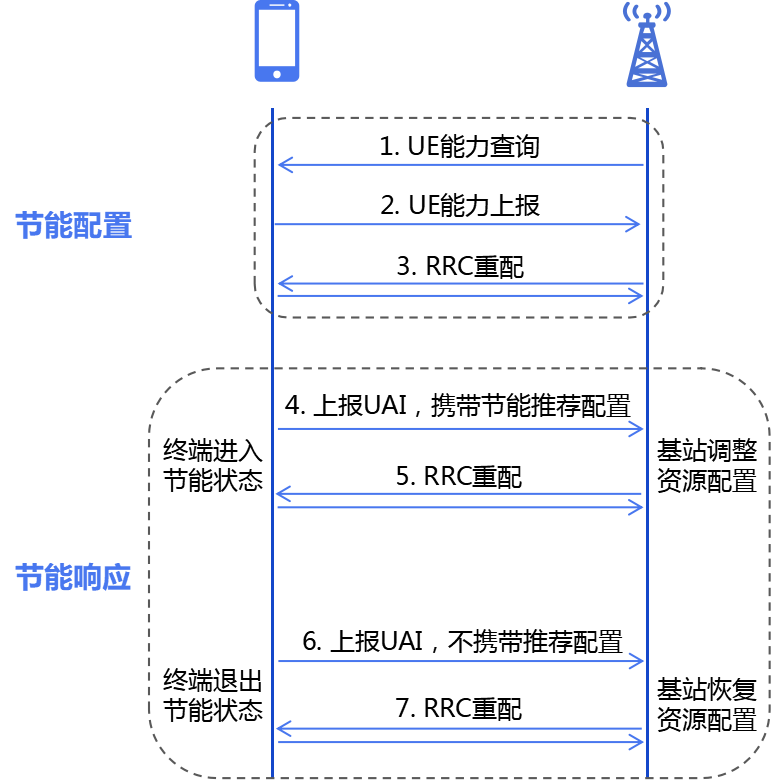
1)基站给终端下发UE能力查询消息。
2)终端回复基站,告知其支持哪些节能能力。
3)基站通过RRC(Radio Resource Control,无线资源控制)重配消息为终端配置不同的节能配置。
4)业务量较小或终端电量受限时,终端向基站上报UAI,并携带推荐的节能配置。
5)基站根据终端的推荐配置进行针对性调整,为终端节能。
6)不再需要节能时,终端向基站上报UAI,通知基站恢复配置。
7)基站下发RRC重配消息恢复终端配置,提高终端业务速率。
在终端上报给基站的UAI中,涉及终端能耗的有如下信息
1)过热辅助信息:最大聚合带宽、最大辅载波个数、最大MIMO层数。
2)节能辅助信息:DRX(Discontinuous Reception,非连续接收)配置、最大聚合带宽、最大辅载波个数、最大MIMO层数、最小跨时隙调度间隔、RRC状态。
3GPP TS 38.331对UAI介绍如下
5.7.4 UE Assistance Information
The purpose of this procedure is for the UE to inform the network of:
- its delay budget report carrying desired increment/decrement in the connected mode DRX cycle length, or;
- its overheating assistance information, or;
- its IDC assistance information, or;
- its preference on DRX parameters for power saving, or;
- its preference on the maximum aggregated bandwidth for power saving, or;
- its preference on the maximum number of secondary component carriers for power saving, or;
- its preference on the maximum number of MIMO layers for power saving, or;
- its preference on the minimum scheduling offset for cross-slot scheduling for power saving, or;
- its preference on the RRC state, or;
- configured grant assistance information for NR sidelink communication, or;
- its preference in being provisioned with reference time information, or;
- its preference for FR2 UL gap, or;
- its preference to transition out of RRC_CONNECTED state for MUSIM operation, or;
- its preference on the MUSIM gaps, or;
- its relaxation state for RLM measurements, or;
- its relaxation state for BFD measurements, or;
- availability of data and/or signalling mapped to radio bearers which are not configured for SDT, or;
- its preference for the SCG to be deactivated, or;
- indicate that the UE has uplink data to transmit for a DRB for which there is no MCG RLC bearer while the SCG is deactivated, or;
- change of its fulfilment status for RRM measurement relaxation criterion, or;
- service link (specified in TS 38.300 [2]) propagation delay difference between serving cell and neighbour cell(s).
UAI参数介绍:
UEAssistanceInformation-v1540-IEs ::= SEQUENCE {
overheatingAssistance OverheatingAssistance OPTIONAL,
nonCriticalExtension UEAssistanceInformation-v1610-IEs OPTIONAL
}
OverheatingAssistance ::= SEQUENCE {
reducedMaxCCs ReducedMaxCCs-r16 OPTIONAL,
reducedMaxBW-FR1 ReducedMaxBW-FRx-r16 OPTIONAL,
reducedMaxBW-FR2 ReducedMaxBW-FRx-r16 OPTIONAL,
reducedMaxMIMO-LayersFR1 SEQUENCE {
reducedMIMO-LayersFR1-DL MIMO-LayersDL,
reducedMIMO-LayersFR1-UL MIMO-LayersU } OPTIONAL,
reducedMaxMIMO-LayersFR2 SEQUENCE {
reducedMIMO-LayersFR2-DL MIMO-LayersDL,
reducedMIMO-LayersFR2-UL MIMO-LayersUL } OPTIONAL
}
ReducedAggregatedBandwidth ::= ENUMERATED {mhz0, mhz10, mhz20, mhz30, mhz40, mhz50, mhz60, mhz80, mhz100, mhz200, mhz300, mhz400}
ReducedAggregatedBandwidth-r17 ::= ENUMERATED {mhz0, mhz100, mhz200, mhz400, mhz800, mhz1200, mhz1600, mhz2000}
UEAssistanceInformation-v1610-IEs ::= SEQUENCE {
idc-Assistance-r16 IDC-Assistance-r16 OPTIONAL,
drx-Preference-r16 DRX-Preference-r16 OPTIONAL,
maxBW-Preference-r16 MaxBW-Preference-r16 OPTIONAL,
maxCC-Preference-r16 MaxCC-Preference-r16 OPTIONAL,
maxMIMO-LayerPreference-r1 MaxMIMO-LayerPreference-r16 OPTIONAL,
minSchedulingOffsetPreference-r16 MinSchedulingOffsetPreference-r16 OPTIONAL,
releasePreference-r16 ReleasePreference-r16 OPTIONAL,
sl-UE-AssistanceInformationNR-r16 SL-UE-AssistanceInformationNR-r16 OPTIONAL,
referenceTimeInfoPreference-r16 BOOLEAN OPTIONAL,
nonCriticalExtension UEAssistanceInformation-v1700-IEs OPTIONAL
}
OverheatingAssistance:
过热辅助信息中,主要参数作用就是要求网络减少分配PSCell/SCells数量、减少分配的带宽、减少上下行MIMO数来降低手机的功耗,进而降低手机过热状态
minSchedulingOffsetPreference:
Indicates the UE's preferences on minimumSchedulingOffset of cross-slot scheduling for power saving
sl-UE-AssistanceInformationNR:
Indicates the traffic characteristic of sidelink logical channel(s), specified in the IE SL-TrafficPatternInfo, that are setup for NR sidelink communication.
drx-Preference-r16:
对DRX的InactivityTimer、LongCycle-r16、ShortCycle-r16等参数进行调节,减少UE唤醒时间,降低功耗
maxBW-Preference-r16:
Indicates the UE's preference on reduced configuration corresponding to the maximum aggregated bandwidth across all downlink carrier(s) and across all uplink carrier(s) of FR1/2, to address overheating or power saving. This field is allowed to be reported only when UE is configured with serving cell(s) operating on FR1/2. The aggregated bandwidth across all downlink carrier(s) of FR1 is the sum of bandwidth of active downlink BWP(s) across all activated downlink carrier(s) of FR1. The aggregated bandwidth across all uplink carrier(s) of FR1/2 is the sum of bandwidth of active uplink BWP(s) across all activated uplink carrier(s) of FR1/2. If the field is absent from the MaxBW-Preference IE or the OverheatingAssistance IE, it is interpreted as the UE having no preference on the maximum aggregated bandwidth of FR1.
When indicated to address overheating, this maximum aggregated bandwidth includes carrier(s) of FR1 of both the NR MCG and the SCG. This maximum aggregated bandwidth only includes carriers of FR1 of the SCG in (NG)EN-DC. Value mhz0 is not used when indicated to address overheating.
When indicated to address power saving, this maximum aggregated bandwidth includes carrier(s) of FR1 of the cell group that this UE assistance information is associated with. The aggregated bandwidth can only range up to the current active configuration when indicated to address power savings.
更多的UE辅助信息可参看TS 38.331 UEAssistanceInformation
-
辅小区休眠Scell dormancy
SCell dormancy是用于降低辅小区功耗的方式。
3GPP R16引起Dormant BWP是为了在Scell上不监听PDCCH,以减少Scell唤醒进一步降低终端功耗。但CSI/RRM测量和beam管理等还正常处理。
Scell Dormancy的前提是终端支持BWP。
Dormancy BWP配置
DormantBWP-Config-r16::= SEQUENCE{
DormantBWP-ID-r16 BWP-Id
withinActiveTimeConfig-r16 SetupRelease{WithinActiveTimeConfig-r16}
outsideActiveTimeConfig-r16 SetupRelease{OutsideActiveTimeConfig-r16}
}
Dormancy BWP流程
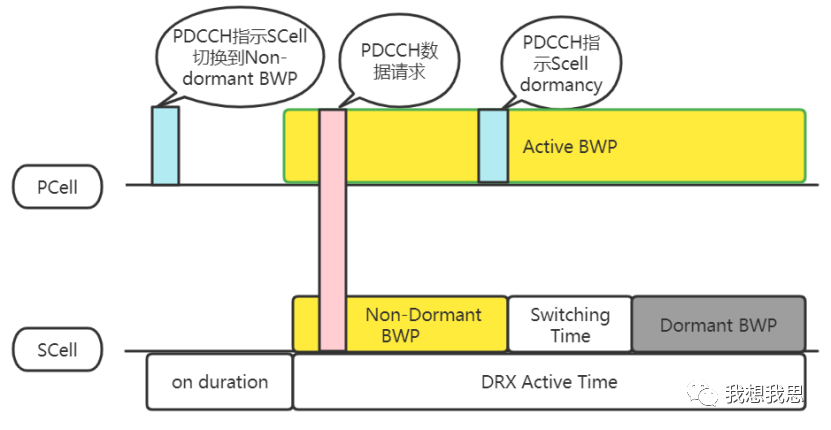
Dormant BWP调度方式
Active 状态下,通过DCI 0-1/1-1指示Scell进入Dormant BWP,挂起Scell C-RNTI调度;
非Active状态下,通过DCI 2-6指示Scell进入Dormant BWP;
结尾
5G的省电技术还有很多,比如天线的自适应、时域的自适应、RRM的松弛测量等等,在TR 38.840 NR Power Saving中有详细介绍。
欢迎关注微信公众号“我想我思”

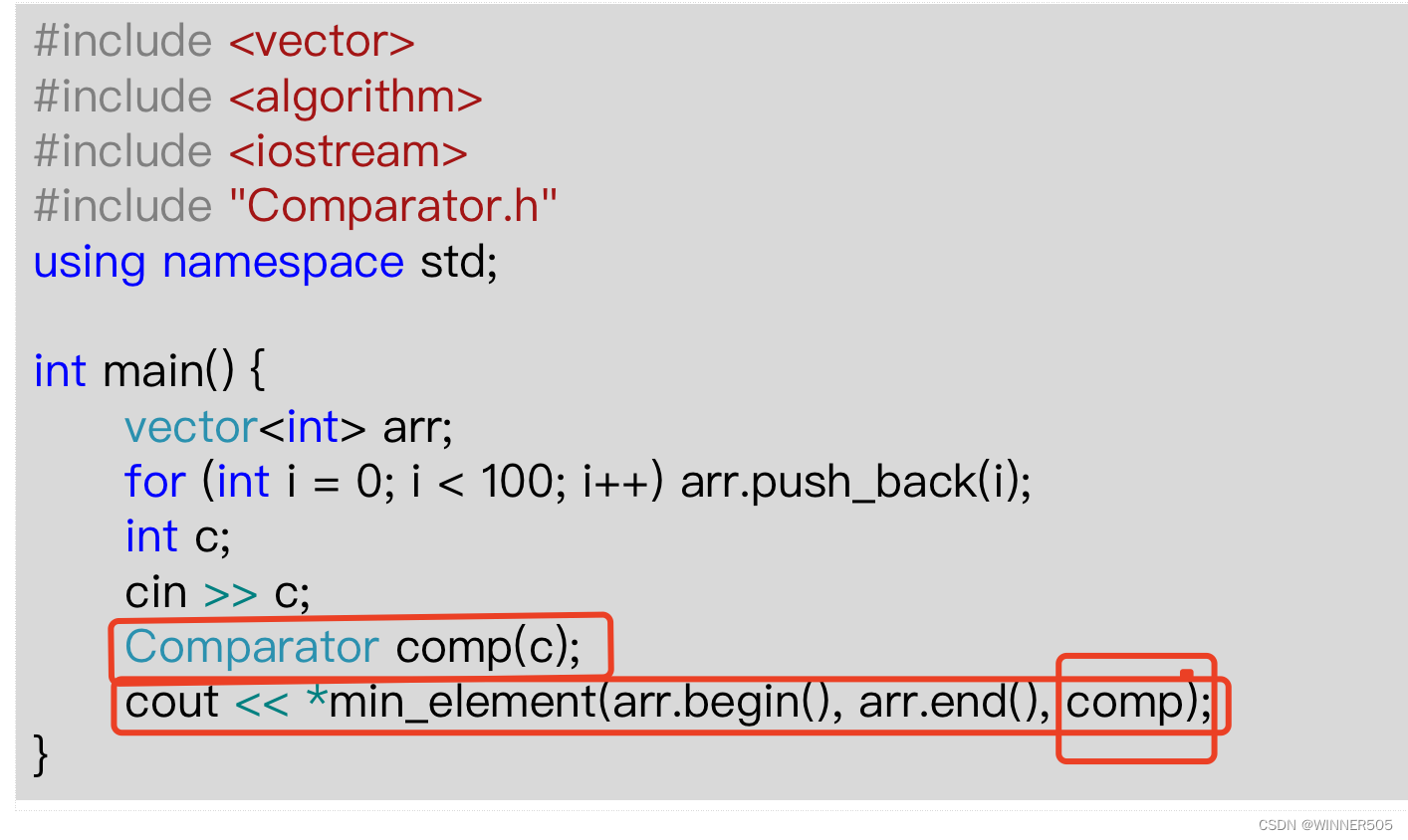
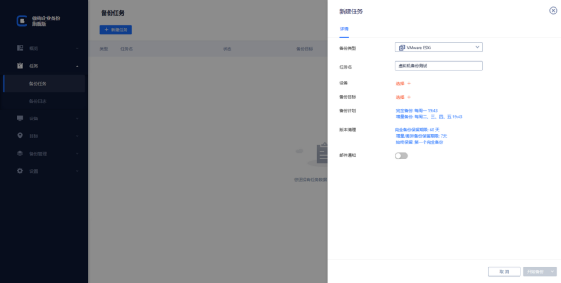


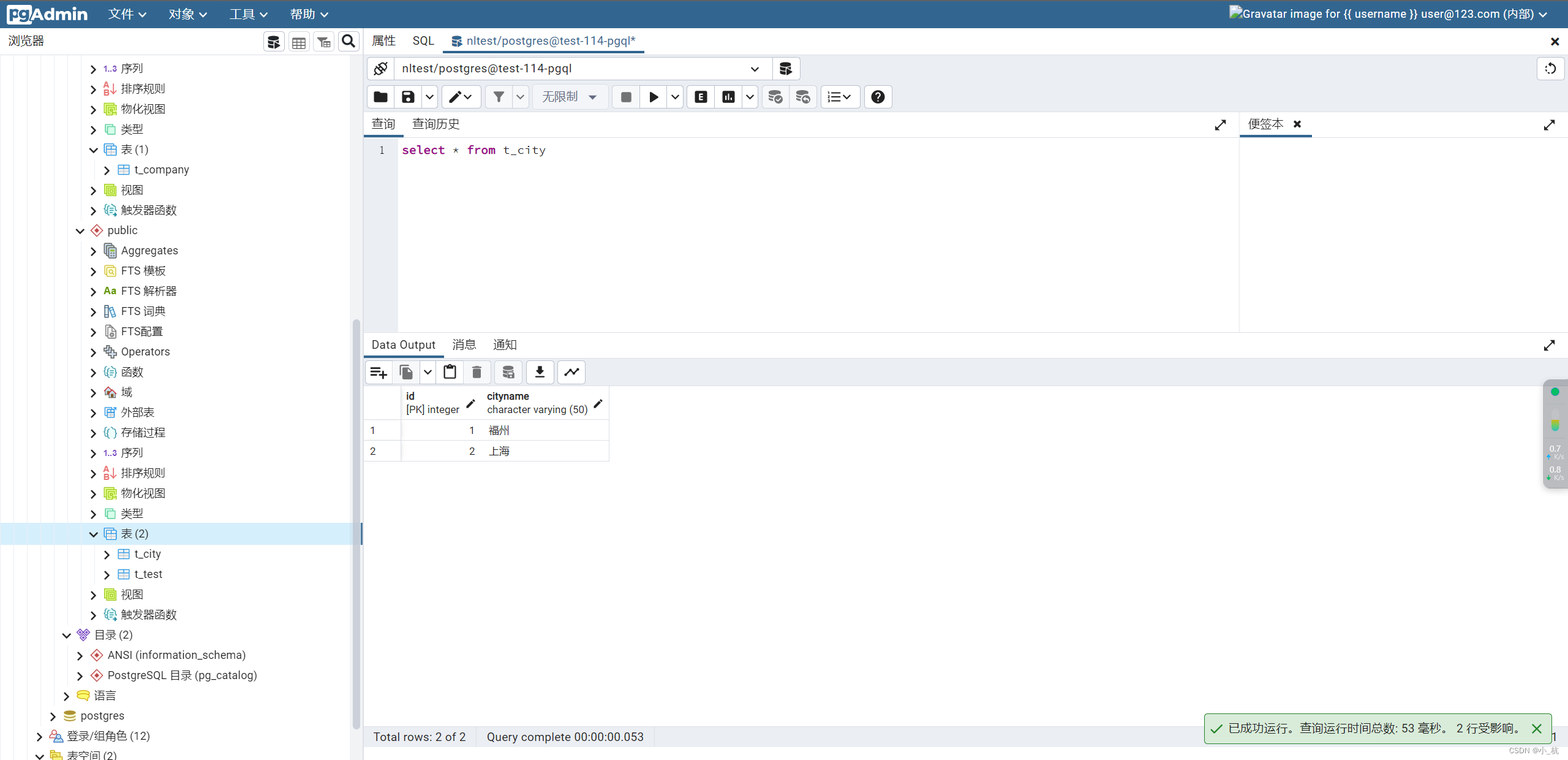
![[PyTorch][chapter 51][Auto-Encoder -1]](https://img-blog.csdnimg.cn/ad287288c7c942129815f6fced4716db.png)

